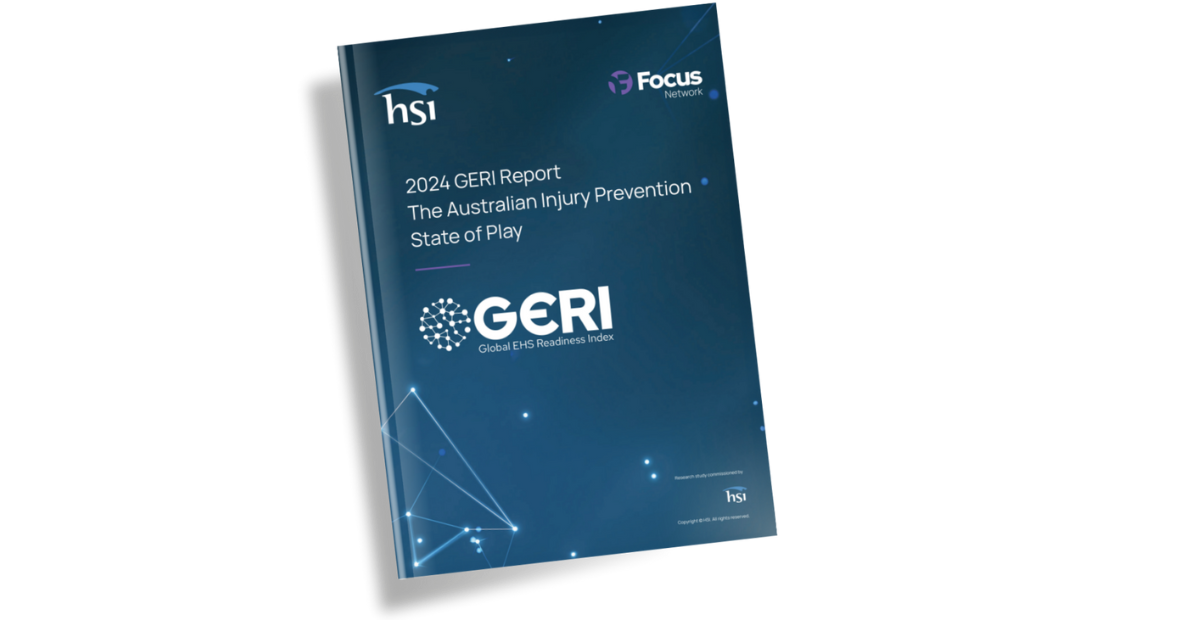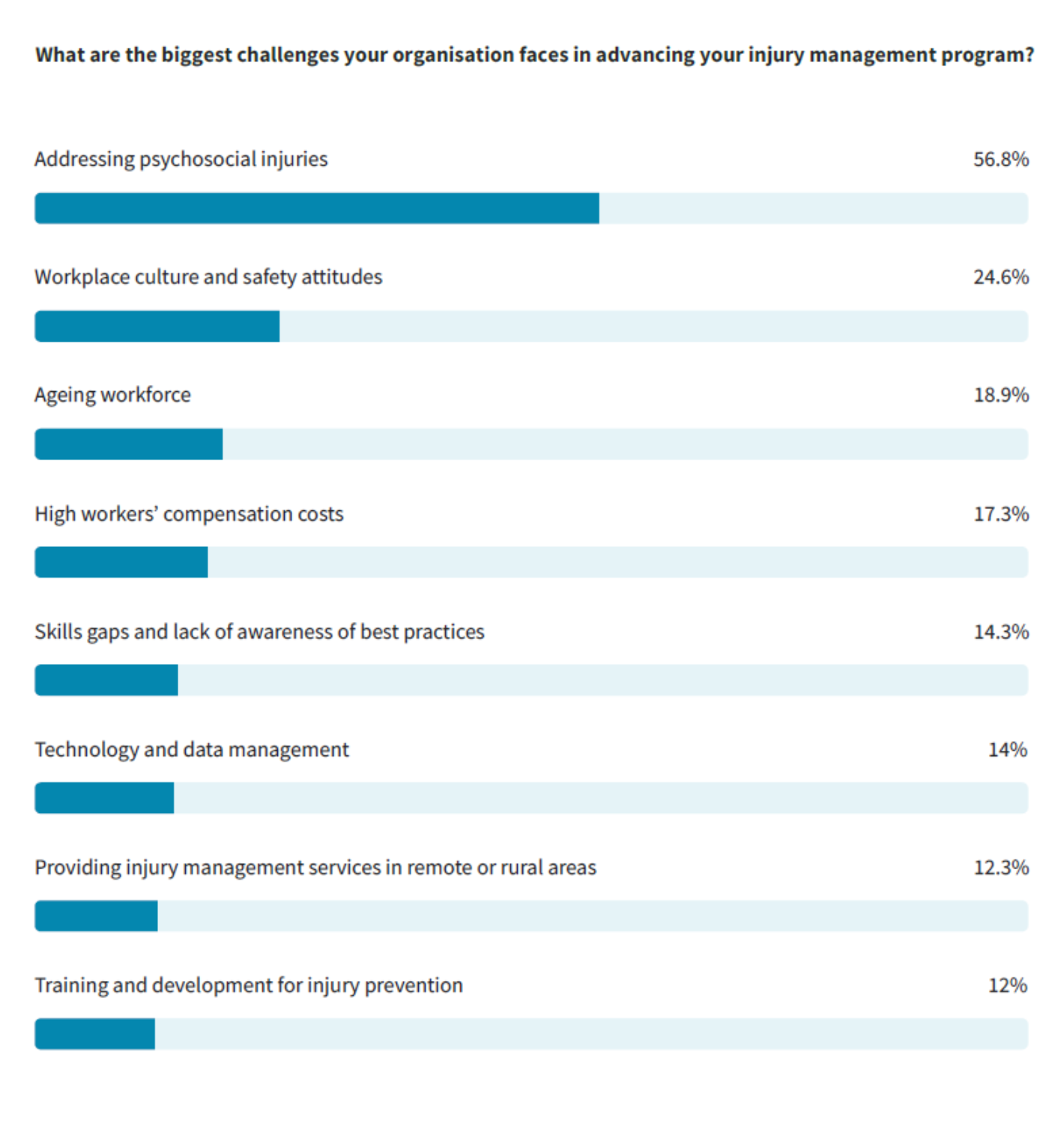
The right software is critical for effective injury management, new research reveals
Latest research into Australian Injury Management underscores the importance of adopting the right software solutions to drive effective injury management within organisations.
The 2024 GERI Report – The Australian Injury Prevention State of Play, which was released at the Comcare National Conference, highlights significant gaps in current practices, particularly regarding the adoption of unified systems and the role of technology in fostering collaboration between safety and injury functions.
According to the latest findings, only 14% of Australian organisations have fully integrated their Environmental Health and Safety (EHS) and injury management functions. This lack of integration is often due to technology fragmentation, communication silos, and differing management priorities. Such barriers have inhibited collaboration between safety and injury functions, which is crucial for improving overall injury management outcomes.

Improved Adoption and Engagement through Technology
One of the critical insights from the research is the low level of engagement and adoption of new injury management technologies. Only 38% of respondents rated their adoption of new EHS and injury management technologies as good or excellent. This figure underscores the need for more effective solutions that can seamlessly integrate into existing workflows and encourage greater stakeholder participation.
The report also reveals that increased stakeholder engagement with both injury management and broader EHS programs typically leads to better outcomes. However, many organisations struggle with low engagement levels, particularly in injury management programs. Only 5% of respondents reported that their employees are highly engaged with these programs, a significant challenge that organisations must address to improve injury prevention.

Driving Collaboration between Safety and Injury Functions
The convergence of injury management and broader EHS functions is seen as a key factor in enhancing collaboration and improving outcomes. The study found that integrating these functions can significantly reduce administrative burdens, improve data accuracy, and enable faster response times to incidents. Moreover, it allows for a holistic approach to risk management, where data from various functions can be combined to prevent injuries and ensure a rapid return to work when they do occur.
Prioritising Mental Health and Psychosocial Risk in Injury Management Programs
As workplace dynamics evolve, the need to address mental health and psychosocial risk has become critical. Recent regulatory shifts in Australia and the rising costs associated with injuries, particularly those related to mental health, are increasingly becoming a significant concern for organisations.
During the Comcare event, we asked attendees: “What are the biggest challenges your organisation faces in advancing your injury management program?”. 56% of attendees identified “Addressing psychosocial injuries” as their primary challenge in advancing injury management programs, followed by 25% who highlighted “Workplace culture and safety attitudes.”

These insights align with the study, which highlights Mental Health and Psychosocial Risk as key drivers for integrating EHS and Injury Management. There is an urgent need to integrate EHS activities, including injury management, to foster a comprehensive approach that shares insights and prevents injuries. Additionally, it highlights the importance of collaboration with other organisational functions, such as HR, to leverage data relevant to mental health.
Incorporating mental health and psychological risk into injury management and broader EHS programs is important in today’s workplace. This integration enables organisations to identify stressors early, implement timely interventions, and create a supportive work environment, ultimately reducing the incidence of psychological injuries. It is essential to fully utilise metrics related to mental health to ensure effective prevention and management strategies.
Choosing the right software provider is critical
As the report suggests, to maximise injury prevention you must have the right software in place to support your organisation.
If reducing risks, minimising injury and providing the safest workplace is your priority, HSI Donesafe’s market leading software can help your team connect data, collaborate, and quickly identify your injury risks. Suitable for mid-sized organisations through to enterprise, HSI Donesafe is the software trusted by over 50% of ASX listed companies. With a range of solutions that adapt to you, the all-in-one platform is simple to setup and use across your entire organisation.
Learn more and get access to the full report HERE.
Discover quality injury management with Donesafe.
Share:



